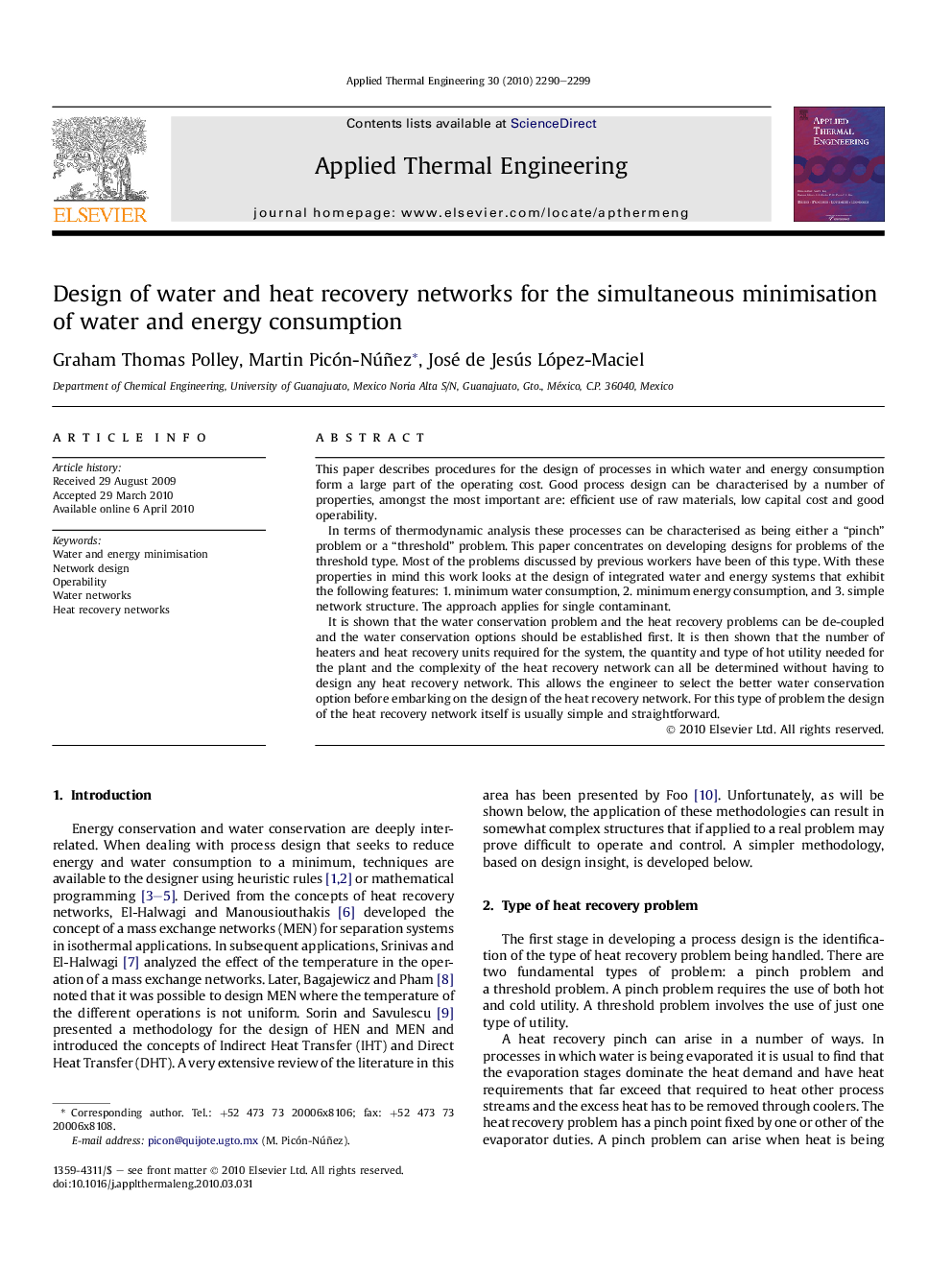| Article ID | Journal | Published Year | Pages | File Type |
|---|---|---|---|---|
| 648157 | Applied Thermal Engineering | 2010 | 10 Pages |
This paper describes procedures for the design of processes in which water and energy consumption form a large part of the operating cost. Good process design can be characterised by a number of properties, amongst the most important are: efficient use of raw materials, low capital cost and good operability.In terms of thermodynamic analysis these processes can be characterised as being either a “pinch” problem or a “threshold” problem. This paper concentrates on developing designs for problems of the threshold type. Most of the problems discussed by previous workers have been of this type. With these properties in mind this work looks at the design of integrated water and energy systems that exhibit the following features: 1. minimum water consumption, 2. minimum energy consumption, and 3. simple network structure. The approach applies for single contaminant.It is shown that the water conservation problem and the heat recovery problems can be de-coupled and the water conservation options should be established first. It is then shown that the number of heaters and heat recovery units required for the system, the quantity and type of hot utility needed for the plant and the complexity of the heat recovery network can all be determined without having to design any heat recovery network. This allows the engineer to select the better water conservation option before embarking on the design of the heat recovery network. For this type of problem the design of the heat recovery network itself is usually simple and straightforward.
